AMD’s Radeon HD 5450: The Next Step In HTPC Video Cards
by Ryan Smith on February 4, 2010 12:00 AM EST- Posted in
- GPUs
The Almost Perfect HTPC Card
When AMD told us that the Radeon 5000 series would offer bitstreaming audio support, our first thought was “this will make an excellent HTPC card.” Unfortunately since AMD started the launch at the high-end, we’ve had to wait some time for bitstreaming audio to cascade down to the passive cards best suited for an HTPC. With the launch of the 5450, that has finally come to fruition.
This in turn has lead us to reexamine the HTPC situation in order to see if the 5450 is really powerful enough for video-only HTPCs. While the Radeon 4350 and 4550 raised the bar for HTPC cards by offering 8-channel LPCM audio, problems ultimately surfaced with their video capabilities. Since deinterlacing and other AVIVO post-processing actions are done by the shader hardware, the limited shading capabilities of these cards meant that AMD couldn’t offer the full suite of AVIVO abilities at once. It was still enough to get perfect scores on the HD HQV test, but these deficiencies became apparently under the wrong situations.
The chief complaint here was that AMD’s best and most computationally intensive deinterlacing mode - Vector Adaptive Deinterlacing - wasn’t always made available for HD resolution video. This has waffled back and forth depending on the driver version, but right now AMD’s drivers lock out this feature (and most of the other AVIVO features) if Smooth Video Playback is enabled. So 4350/4550 owners had to choose between VA and other features without being able to have it all.
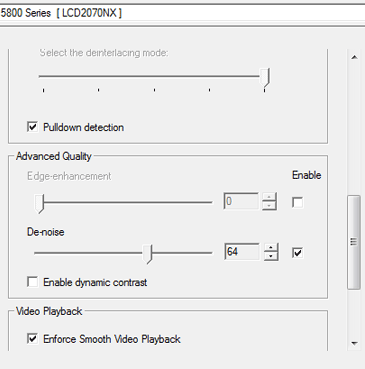
AVIVO Control Panel
When doing the research for this review we came across these complaints, and also a very interesting test for the issue: a specially crafted heavily interlaced 1080i MPEG-2 file called Cheese Slices, made by blaubart of the AV Science Forum. Cheese Slices is what amounts to an stress test that has more noise and interlacing artifacts in it than any real video would have, and is more than deinterlacers today can handle. It’s an unfair test – but that’s by design – as it does a very good job of highlighting when Vector Adaptive Deinterlacing is in use. With Cheese Slices, we can easily tell if Vector Adaptive mode is being used, or a lesser mode like Motion Adaptive is in use by what happens to the angled lines inside the geometric figures. Smooth lines are Vector Adaptive deinterlaced, jagged lines are deinterlaced with a lesser mode.
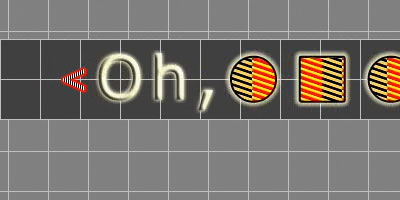
Reference quality: non-interlaced

Radeon 5670 Deinterlacing
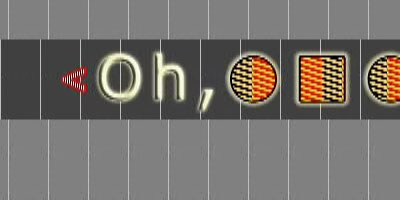
Radeon 5450 Deinterlacing
For the sake of reference, the Radeon 5670 and higher pass this test. Cards at that performance level have more than enough shader power to process all of the AVIVO effects and provide Vector Adaptive Deinterlacing at the same time, and this is the same case for the 4600 series. The 4550 on the other hand fails this test so long as Smooth Video Playback is enabled, as it’s outright disabling Vector Adaptive Deinterlacing.
As for the 5450, the results aren’t quite what we were hoping for. AMD believes that the 5450 is powerful enough that they allow it to use all of the AVIVO processing features at once, which means the drivers allow us to turn on things like Vector Adaptive Deinterlacing and denoising even when Smooth Video Playback is enabled. However in our tests with Smooth Video Playback enabled, Vector Adaptive Deinterlacing isn’t used even when we force it through the drivers. Everything else works with Smooth Video Playback enabled, just not Vector Adaptive Deinterlacing. If we disable Smooth Video Playback, then Vector Adaptive Deinterlacing will kick in.
We’ve informed AMD of our findings, and they’re still looking in to the issue. However we believe that the problem is ultimately a lack of resources on the 5450 to handle all of this, so we’ll see what they come up with.
It also wouldn’t be fair on our part to harp on this too much, as by no means is the 5450 a bad HTPC card. Everything else works correctly and AMD’s Motion Adaptive mode is quite good. In fact the only practical reason that Vector Adaptive mode matters is that it handles one thing better than Motion Adaptive: angled lines. The lines on sports fields suffer badly from interlacing artifacts, and Motion Adaptive mode can’t completely reconstruct them correctly; you need Vector Adaptive to accomplish this. So the only issue with the 5450 as an HTPC card is that it’s not a great choice for watching sports on a large TV where Motion Adaptive Deinterlacing would result in jagged lines on the field.

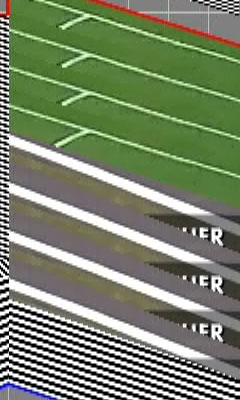
Sports field lines: Non-interlaced on the left, 5450 Deinterlaced on the right
It’s a small edge case, but it’s something that keeps the 5450 from being the perfect HTPC card. Most people should be fine with Motion Adaptive deinterlacing, but if you need perfect AVIVO performance from an AMD card, you’re going to need a Redwood card such as the 5670 at this point in time. This stands as something AMD can improve for videophiles for their next series of low-end cards, similar to how they improved things for audiophiles by adding bitstreaming audio support for the 5000-series.
We also quickly tested NVIDIA’s lower-end cards here to see how they fare. NVIDIA doesn’t offer as many post-processing controls as AMD does, instead leaving it up to the drivers to decide on most things. NVIDIA’s hardware is capable of similar deinterlacing abilities as AMD’s hardware, it just isn’t user-selectable.
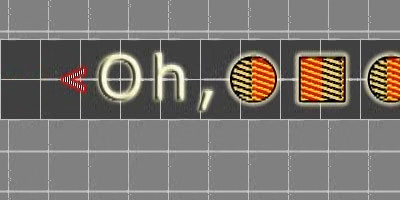
GeForce 210 Deinterlacing
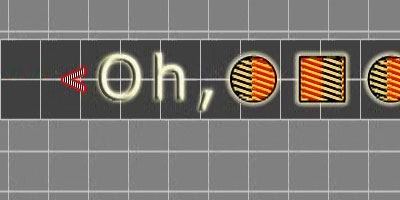
GeForce GT 220 Deinterlacing
The GeForce 210 fares better than the 5450 with Smooth Video Playback here, but it still produces a rough output. Once we move up to the GT220, NVIDIA’s deinterlacer fully catches up and perfectly deinterlaces the angled lines on Cheese Slices.
Finally, if you’d like to see the full 1920x1080 resolution screenshots of our tests, you can get them here.










77 Comments
View All Comments
Ryan Smith - Thursday, February 4, 2010 - link
That is one of the things that changed. However it's not very resource intensive for the shaders (which is one of the reasons why it was moved in the first place) and I don't seriously suspect that's the cause.andy o - Thursday, February 4, 2010 - link
So far all the 5000 series cards have an issue with PowerPlay. It messes audio especially on Dolby digital and DTS tracks, when DXVA is disabled. When DXVA is enabled the clocks are stabilized (at 400 MHz GPU and 900 MHz memory for the 5770), so Powerplay doesn't screw with the audio. Without using DXVA, the clocks are all over the place (PowerPlay enabled, normally a good thing), and this gives audio dropouts with DD and DTS tracks.Could you test this, with HD videos and DD/DTS tracks? Maybe you'll have a better chance of getting this fixed than a bunch of us just dealing with their horrible support.
Powerplay also triggers funky sound when HDMI is used and 5.1 or 7.1 24-bit 96 kHz or 192 kHz output is set on Windows. Just set it like that and go about your business and you'll hear either crackling or crazy channel switching.
See here for reference, and the following posts of other users who confirm it, and even come up with their own ways to disable Powerplay. This thread at Doom9 was where it was discovered, and later confirmed by nearly everyone who tried (except one strange case or two).
Ryan Smith - Saturday, February 6, 2010 - link
Andy, shoot me an email. I was going to email you, but I'm not sure the address for you in our system actually goes to an account that gets read.andy o - Monday, February 8, 2010 - link
just sent you the email, thanks.PR3ACH3R - Friday, February 5, 2010 - link
[Quote]So far all the 5000 series cards have an issue with PowerPlay. It messes audio especially on Dolby digital and DTS tracks, when DXVA is disabled. When DXVA is enabled the clocks are stabilized (at 400 MHz GPU and 900 MHz memory for the 5770), so Powerplay doesn't screw with the audio. Without using DXVA, the clocks are all over the place (PowerPlay enabled, normally a good thing), and this gives audio dropouts with DD and DTS tracks.
[/quote]
1. ATI & the Review Sites, including Anandtech,
have been ignoring this horrible problem in these cards,
which makes them , for all practical purposes - useless.
But - It does not stop there.
2. The problem you have mentioned with The 57xx series,
creates SERIOUS DPC latencies , especially in XP,
that brakes even the fastest systems, & All audio is full of glitches & clicks chaos.
3. To add insult to injury 2D performance is the worst EVER seen on the PC, beaten even By IGPs.
Bottom Line:
Anadtech yet again fails to detect & report to these issues,
So I would not expect any replies to your questions here.
These cards spell Recall / Class Action all over them.
andyo - Friday, February 5, 2010 - link
Also, I'm not sure what you mean with number 3 (2D performance issues). Could you give some examples so I can test it?PR3ACH3R - Saturday, February 6, 2010 - link
If You do any sort of regular graphics (ignore the IF..)its all 2D ..
After looking hopelessly for ANY solution or even recognition to this problem from professionals, so I can share it, I found there is only one Site with staff professional & unbiased enough to Note the problem.
Not only did they notice it, they published 2 giant articles about it, & it is painfully, obviously, certainly NOT Anandtech.
http://translate.googleusercontent.com/translate_c...">http://translate.googleusercontent.com/...usg=ALkJ...
http://translate.googleusercontent.com/translate_c...">http://translate.googleusercontent.com/...usg=ALkJ...
andyo - Friday, February 5, 2010 - link
It is a big issue, but I'm not sure if it's a hardware problem. It's probably a driver thing.In any case, you can disable Powerplay for the time being, I've done what I linked above and it's working acceptably for me, when I play a game, I'll switch profiles to enable the higher clocks. I'm not sure how it would work on XP though or if the procedure is the same, but you can also use GPU clock tool to stabilize the clocks.
Taft12 - Thursday, February 4, 2010 - link
I have a hard time seeing AMD giving this much attention, the number of users concerned with this issue is infintesimal.Why overclock your GPU when you are focused on the audiophile features? I'll be shocked if the official response is anything other than "Graphics card audio output not supported when Powerplay enabled".
andy o - Thursday, February 4, 2010 - link
Oh and BTW, also as the poster above said, it's not an "audiophile" issue. I actually try to distance myself form that term as much as possible. It's happening whenever DXVA is not enabled, and with DD and DTS audio. As in when playing DVDs with (say) PowerDVD with its post-processing features. Pretty normal scenarios. And it's not a subtle thing. It's dropouts (pops or cut outs in the audio). Also, choppy flash video (shouldn't happen with DXVA accelerated video with flash 10.1 though).Powerplay also triggers horrible crackling and channel switching when output is set to multichannel (5.1 or 7.1) 96 kHz or 192 kHz audio for the Windows mixer. Hardly audiophile issues at all, any of these.